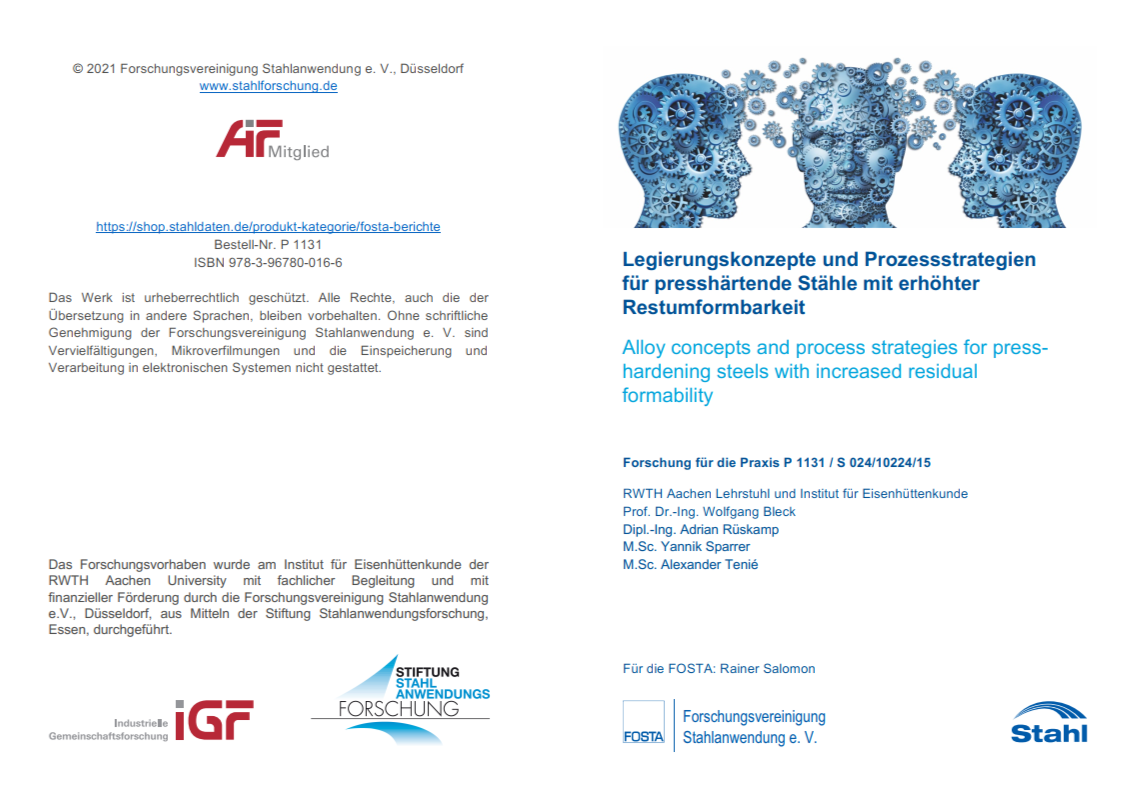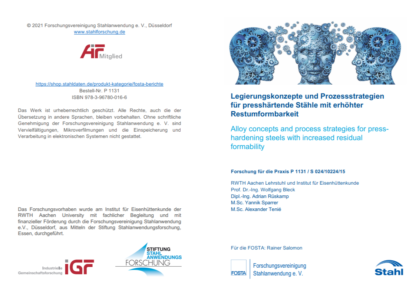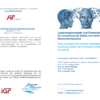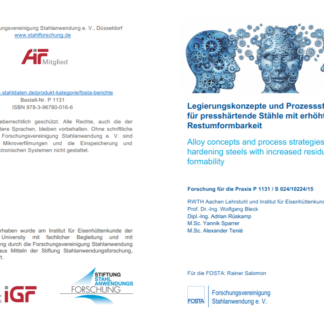Description
P 1131 – Alloy concepts and process strategies for presshardening steels with increased residual formability
An effective way to reduce the emissions of passenger cars is to reduce the weight of the vehicle. The greatest potential for savings lies in the area of body design, where high-strength steels are now replacing conventional sheet materials. However, the use of ultra high-strength steels to increase vehicle safety in the event of a crash is particularly challenging. One of the most efficient processes for manufacturing crash-resistant components, such as the B-pillar, is press-hardening, in which forming and hardening are combined in a single process step. Currently, the material 22MnB5 (1.5528) is used at the industrial series production of press-hardened components, but the material ductility in the press-hardened state is limited due to the alloying concept. An improved property profile of strength and residual formability is sought for increased passenger’s safety in the event of a crash.
This project therefore deals with the development of new alloying concepts and process strategies to improve the residual formability of press-hardened steels. Three different alloying concepts were investigated: the dual-phase concept (DP), the grain refinement concept (KF) and the retained austenite concept (RA). For a total of 6 steels, different heat treatment cycles were combined with press-hardening depending on material´s chemical composition. The focus of the investigations was on microstructure development and the resulting characteristic properties in tensile and bending tests. In addition, the coatability and further processability by welding were investigated. It has been worked out that an improvement of the ductility of press-hardened materials in the RA concept can be achieved by complex Q&P structures (Quenching & Partitioning). The investigated DP and KF concepts showed only a marginal improvement in the property profile. The best properties in the RA concept result for a material with 0.3 wt% C and 2.5 wt% Mn with tensile strength values of 1400-1500 MPa and total elongation values of 14-19 % depending on the respective heat treatment. Further tests with this alloy show that the material is temper-resistant and therefore suitable for paint bakehardening in vehicle production. Joining can be carried out both by laser beam and spot welding. In principle, hot-dip coating with AlSi and zinc coatings is possible.
In this project, it has thus been possible to demonstrate possibilities for improving the material properties of press-hardened steels by means of a Q&P heat treatment strategy. The crash absorption potential of the manufactured materials could be doubled compared to the reference material 22MnB5.
Published in:
2021
Authors:
Prof. Dr.-Ing. W. Bleck, Dipl.-Ing. A. Rüskamp, M.Sc. Y. Sparrer




